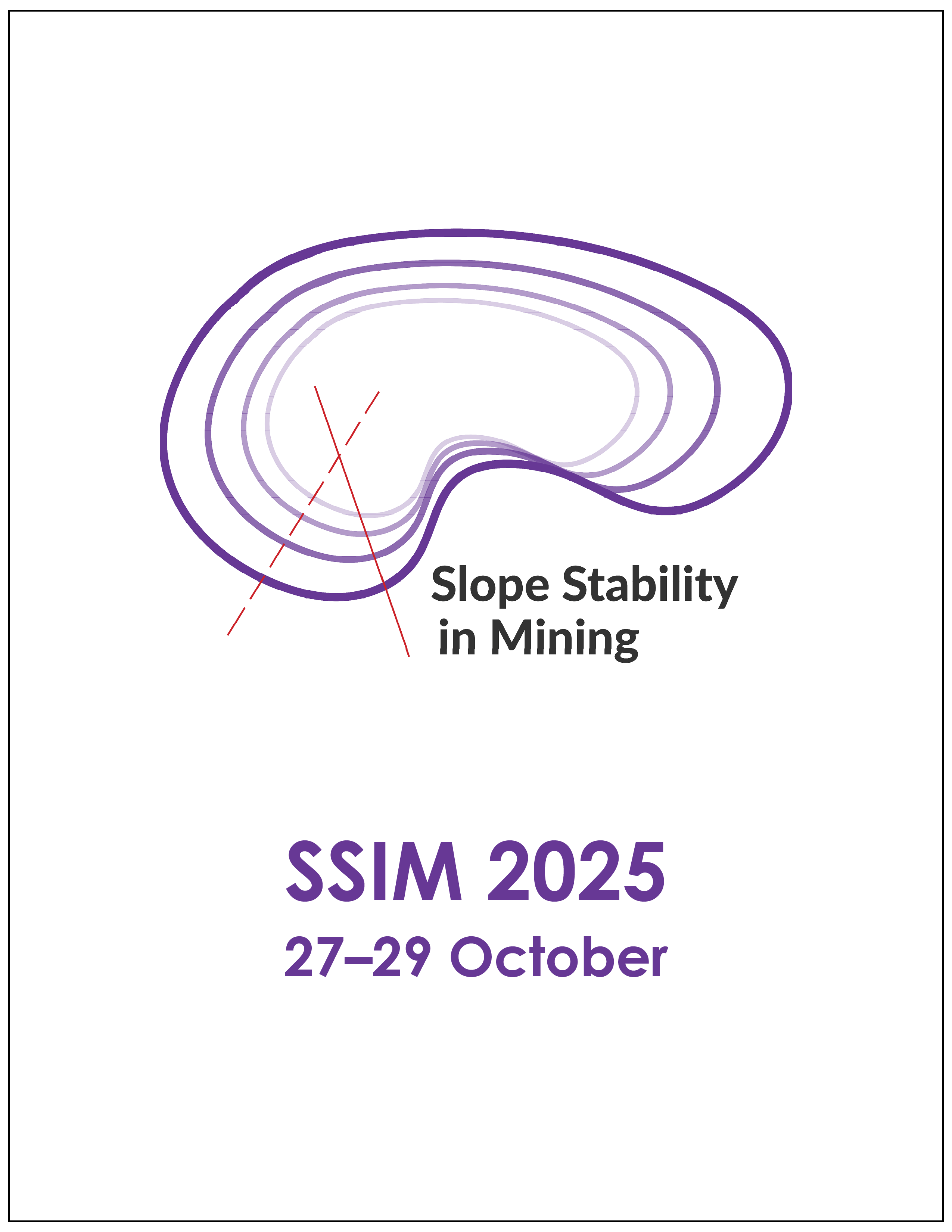Simulated 3D slope stability monitoring using InSAR enabled by the MDA CHORUS synthetic aperture radar constellation

|
Authors: Hickson, D; Oliver, P; Morin, R |
DOI https://doi.org/10.36487/ACG_repo/2535_51
Cite As:
Hickson, D, Oliver, P & Morin, R 2025, 'Simulated 3D slope stability monitoring using InSAR enabled by the MDA CHORUS synthetic aperture radar constellation', in JJ Potter & J Wesseloo (eds), SSIM 2025: Fourth International Slope Stability in Mining Conference, Australian Centre for Geomechanics, Perth, https://doi.org/10.36487/ACG_repo/2535_51
Abstract:
Satellite synthetic aperture radar (SAR) observations are crucial for an effective ground stability monitoring program in mining operations. Interferometric processing can provide millimetre-precision time series measurements of ground displacement at high resolution over wide areas, regardless of time of day or weather conditions. However, if the direction of ground displacement is not aligned with the line-of-sight (LOS) between the satellite and target, the measurements will be significantly underestimated. Furthermore, the side-looking imaging geometry of these satellites introduces imaging distortions, such as layover and shadow, that also depend on the LOS and surface topography. These limitations on the quality of interferometric measurements are significant over mining sites with complex topographies and dynamic ground movement. These disadvantages can be partially overcome by incorporating multiple imaging geometries into the monitoring plan; however, given that most SAR satellites are sun-synchronous orbiting (SSO), a nearly polar orbit, this only improves sensitivity to east–west components of ground motion, leaving any north–south components poorly constrained. MDA Space will soon be offering MDA CHORUS, a next-generation dual-frequency C- and X-band SAR satellite constellation which will operate in an innovative mid-inclination orbit that provides access to new imaging geometries for interferometric processing. These unique LOS vectors will increase the measurement coverage in areas with variable topography and enable 3D ground displacement measurements with high precision in all directions, including the north–south component. In this work we present simulations of InSAR processing for 3D ground displacement monitoring at the BetzePost open pit at the Goldstrike mine in Nevada, USA. For the open pit we show how measurements by CHORUS increase the density of reliable measurements for a better characterisation of ground motion. For various multi-sensor combinations of CHORUS with SSO SAR sensors, such as CHORUS and RADARSAT-2, we simulate the precision attainable in 3D ground displacement measurements.
Keywords: slope stability, subsidence, geotechnical risk, remote sensing, InSAR
References:
Brouwer, WS & Hanssen, RF 2023, ‘A treatise on InSAR geometry and 3-D displacement estimation’, IEEE Transactions on Geoscience and Remote Sensing, vol. 61, pp. 1–11.
Eppler, J, Mantle, V, Sharma, J & Caves, R 2023, ‘CHORUS SAR constellation: a mission capability overview’, 12th International Workshop on Advances in the Science and Applications of SAR Interferometry and Sentinel-1 InSAR – FRINGE 2023,University of Leeds, Leeds.
Furhmann, T & Garthwaite, MC 2019, ‘Resolving three-dimensional surface motion with InSAR: constraints from multi-geometry data fusion’, Remote Sensing, vol. 11, no. 3, pp. 1–22.
Greene Gondi, F, Eppler, J, Caves, R & MDA CHORUS Team 2023, ‘Enabling 3D deformation monitoring with the CHORUS SAR constellation’’, 12th International Workshop on Advances in the Science and Applications of SAR Interferometry and Sentinel1 InSAR – FRINGE 2023,University of Leeds, Leeds.
Sharma, J & Caves, R 2022, ‘CHORUS – changing how and when we observe our planet’, EUSAR 2022: 14th European Conference on Synthetic Aperture Radar, VDE, Berlin, pp. 1–4.
Sharma, J, Caves, R & Mantle, V 2024, ‘CHORUS mission update’, EUSAR 2024: 15th European Conference on Synthetic Aperture Radar, VDE, Berlin, pp. 1008–1011.
Wright, TJ, Parsons, BE & Lu, Z 2004, ‘Toward mapping surface deformation in three dimensions using InSAR’, Geophysical Research Letters, vol. 31, no. 1, pp. 1–5.
© Copyright 2025, Australian Centre for Geomechanics (ACG), The University of Western Australia. All rights reserved.
View copyright/legal information
Please direct any queries or error reports to repository-acg@uwa.edu.au
View copyright/legal information
Please direct any queries or error reports to repository-acg@uwa.edu.au

